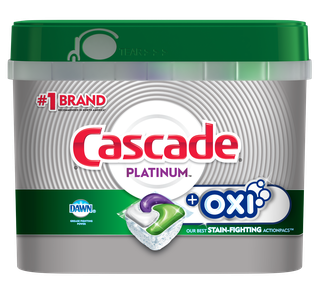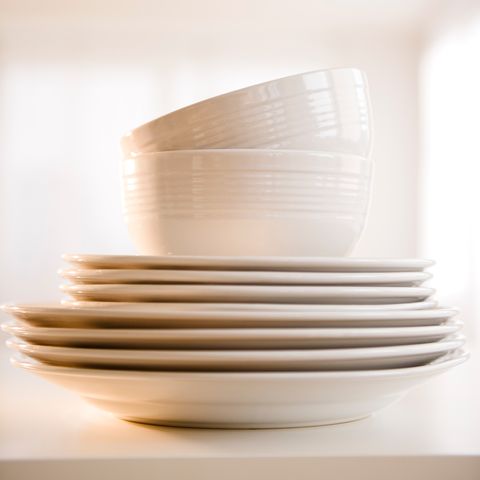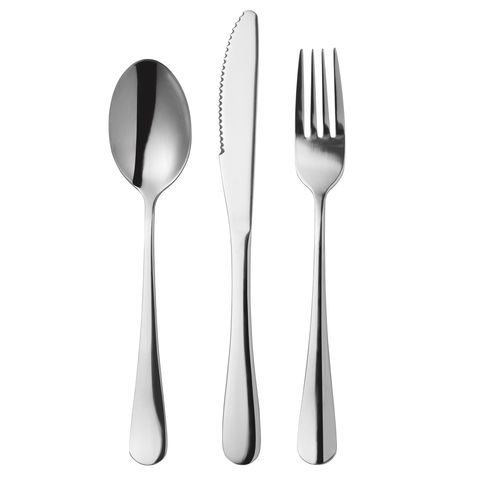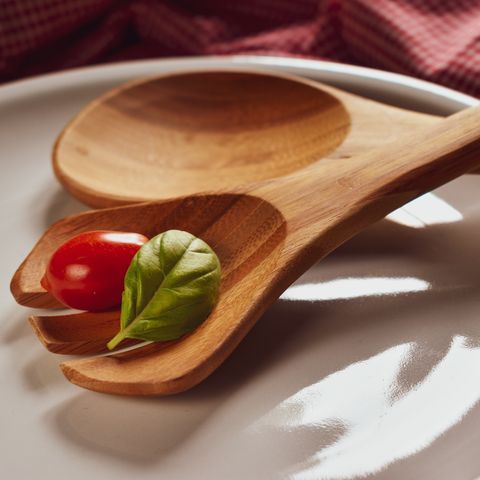How To Get All Your Dinner Table Essentials Truly Clean
4 min readFew things are as aggravating as pulling items out of the dishwasher and finding remnants of what it was supposed to take care of: a smidge of stuck-on tomato sauce, a faint splotch of coffee, a crusty bit of burnt cheese on the rim. (Annoying!)
But you don’t have to settle for stained or spotty tableware, and you don’t have to be a cleaning expert to make all those pieces sparkle either. The key is to arm yourself with a few smart strategies—sharp utensils should always be loaded facing down, people!—and some heavy-duty grime fighters like Cascade Platinum + Oxi, a powerful solution that contains stain-lifting ingredients that break down stuck-on food and leaves your dishes with a hygienic clean that you can see and feel.
Want a foolproof fix for all your tableware essentials? Check out our quick cleaning guide below.
Ceramic bowls and plates
Theoretically, one dishwasher cycle is all it should take to get these everyday pieces fully clean, but a lot depends on your approach. First, scrape off any food scraps but don’t do any pre-washing—most detergents actually work better when the enzymes can attach to some food particles. Choose a strong, stain-busting formula that will remove visible grime as well as residue you might not be able to see but can feel (like a rough texture when sliding your hand over a supposedly “clean” dish).
Then, load strategically: bowls up top, facing down—to avoid pooling water—and dishes on the bottom, where the spray is strongest, facing the center. And no nesting! Anything the spray can’t reach won’t get cleaned.
Stainless steel flatware
Your everyday forks, knives and spoons get their own little home—the cutlery bin—and with that, a few “house rules” to follow. Don’t ever use a detergent with lemon because that acidity can damage the flatware’s finish. Make sure the dishwasher’s rinse agent dispenser is full—this will help prevent spotting. In dishwashers that have a cutlery bin, place knives with handles up for safety, and alternate forks and spoons; otherwise, they’ll nestle together and the water won’t be able to hit all the surfaces. In dishwashers that have a flatware tray, there are usually notches to help utensils stay propped the way they should.
And if you do see spots from a previous wash, and want to handle them quickly? Polish them with a paste of baking soda and water, then rinse and buff dry.
Steak knives
It’s tempting to toss these in the cutlery bin with your other knives, but these sharper ones require handwashing instead (in hot, soapy water), according to Good Housekeeping’s The Complete Household Handbook. That’s because the blades can be damaged in the dishwasher, and high heat can warp the handles and crack them if they’re wooden. Towel-dry the steak knives immediately to prevent rust, and store them in a wood block or other slotted device that keeps the blades from touching, so they stay scratch-free. If you do get rust marks, don’t stress; just stab a large onion a few times (really!). The onion’s acid will get rid of the rust.
Drinking glasses and wine glasses
A grease-fighting dishwasher detergent should leave your glassware clear after one wash. If you have hard water, though, those minerals can occasionally leave a cloudy film, so make sure your rinse aid is full when you run your dishwasher. Think your glasses get placed over those dishwasher-rack prongs? Nope. They’re supposed to go next to them because the prong tips can leave water spots.
Ceramic mugs
This how-to is as straightforward as it gets: Load on the top rack, in between the rungs, and use a hard-working detergent that’s formulated specifically as a stain-fighter. If your stained mugs are delicate porcelain that are not dishwasher-safe, just scrub them off using a little baking soda–and–dish soap paste, then rinse and wash as usual.
Wood bowls and salad servers
Wood will warp or crack if you put it in the dishwasher due to the humidity and high heat, so your best bet is to always hand-wash wood pieces with mild dish soap and water. Dry them thoroughly and right away using a soft cloth (no air-drying!). To keep the finish looking good, you may want to coat the surface with mineral oil once in awhile. Let it stand overnight and then wipe with paper towels.
Oven-to-table pots and pans
Most oven-to-table cookware is dishwasher-friendly; for best results, use a detergent that’s formulated to remove burnt-on food.
But if you have a pot or pan that isn’t dishwasher-safe, it can be helpful to pre-treat it before handwashing. Use a plastic spatula to remove as much stuck-on food as you can, rinse the dish, and then scrub the stubborn spots with a bristle brush and a mix of baking soda and liquid dish soap. Once you’ve gotten rid of the grime, run it through the dishwasher as usual.
This content is created and maintained by a third party, and imported onto this page to help users provide their email addresses. You may be able to find more information about this and similar content at piano.io









